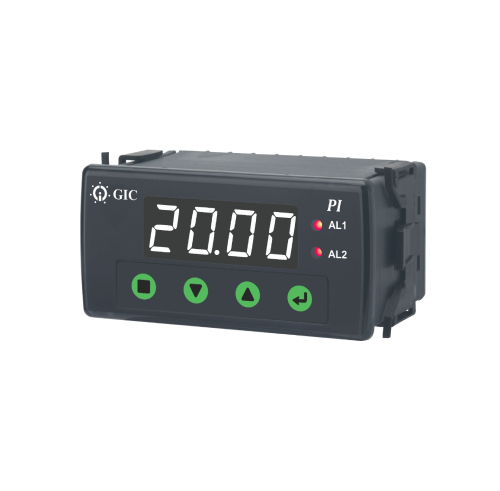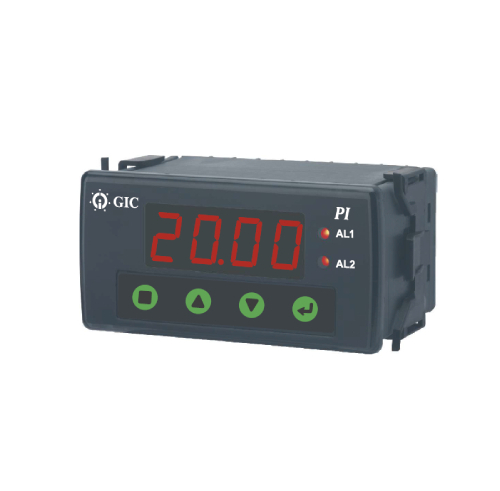Supply Voltage +
Mode +
Mounting +
Relay +
No. Of Programs +
Display +
Power Reserve +
Clock Accuracy +
Pre-Programmed +
Accessories +
Product visibility +
Analog Input +
Base/Ext +
Bazel type +
Center Distance +
Clock +
Control Action +
Display with & without +
Input/Output +
No. of digits +
No. of set points +
Output +
Output 1 +
Output 2 +
Output 3 +
Product Type +
Read Out +
Register +
RS485 Communication +
Sensor Input +
Size +
Termination +
Contact +
Delay +
Enclosure Design +
Function +
Input Voltage +
Output Current +
Output Voltage +
Power +
Relay Output +
Supply +
Timing Range +
Variant +
Alarm Output +
Analog Output +
Auto Reset time +
Auxiliary Supply +
CBCT Size +
Colour +
Current Range +
Digital Display +
Digital Input +
Digital Output +
Display Colour +
High Speed Inputs +
Input Signal +
LCD Display +
Leakage Current +
Module +
Neutral Loss +
Output Signal +
Over Frequency +
Over Voltage +
Phase Asymmetry +
Phase Loss +
Phase Sequence +
Reset +
Sensor Supply +
Series +
Settable Off Delay +
Settable On Delay +
System +
Transistor Output +
Under Frequency +
Under Voltage +
Voltage +
Process Indicator
A Process Indicator is a device that monitors, indicates, and analyzes process parameters. Process indicators play a vital role in tracking and controlling essential parameters such as temperature, pressure, humidity, flow rate, and more. With their reliable and user-friendly features, they enhance the efficiency and productivity of industrial processes.
Process indicators are designed to provide real-time data and a clear visual representation of process variables, enabling operators to make informed decisions and ensure optimal process performance. These indicators are equipped with advanced sensors and algorithms, allowing for precise measurement and dependable performance.
In industrial applications, process indicators find extensive use in sectors such as manufacturing, oil and gas, pharmaceuticals, food and beverage, and many others. They enable operators to monitor critical parameters and maintain optimal conditions for efficient production and quality control.
With their intuitive interfaces and easy-to-read displays, process indicators simplify the monitoring process and provide valuable insights into process performance. They can be configured with alarms and setpoints to alert operators when certain thresholds are exceeded, enabling timely intervention and preventing potential issues.
Experience the benefits of process indicators in enhancing operational efficiency, maintaining quality standards, and improving productivity in your industrial processes. Harness the power of accurate process monitoring with these indispensable tools.
Why are Process Indicators Important?
Process indicators are essential tools in various industries where monitoring is critical. They play a vital role in ensuring the safety, efficiency, and quality of processes that involve sensitive operations. Here are some key reasons why process indicators are important:
Process Optimization
They help optimize process parameters by enabling operators to monitor temperature variations and make necessary adjustments. By closely monitoring temperature trends, operators can identify potential issues, prevent equipment failures, and improve overall process efficiency. For example, in a heat treatment process, a temperature indicator ensures that the desired temperature is maintained throughout the process, resulting in consistent product quality.
Safety and Equipment Protection
We serve as early warning systems by alerting operators to abnormal temperature fluctuations or deviations. This is crucial for preventing equipment damage, reducing the risk of accidents, and ensuring operator safety. In industries such as power generation, oil and gas, and manufacturing, temperature indicators help prevent equipment from overheating or underheating, which can lead to costly breakdowns or hazardous situations.
Quality Control
They are vital in maintaining product quality and consistency. In industries like food and beverage, pharmaceuticals, and laboratory settings, precise temperature control is essential to ensure product integrity, stability, and compliance with regulatory standards. Temperature indicators enable operators to monitor critical temperature ranges during production, storage, or transportation, minimizing the risk of product spoilage, degradation, or compromised quality.
Inputs & Functions of Process Indicator
Process Indicators offer a wide range of inputs to cater to different field requirements. With sensor inputs such as J, K, T, R, S, and RTD, as well as analog input indicators like 0-10V/0-5V and 0-20mA/4-20mA, these indicators allow for versatile and precise monitoring of field inputs. This flexibility enables operators to gather data in various forms, ensuring compatibility with different sensors and instruments.
Display scaling is a vital feature of Process Indicators that enhances usability and readability. With display scaling, operators can customize the scale of the displayed values based on the variation in input. This functionality provides a clearer and more intuitive representation of the measured parameters, making it easier for operators to interpret and monitor the process variables.
Another significant capability of Process Indicators is analog output selection. Users have the flexibility to choose the desired type of analog output as per their specific requirements. Whether it is voltage or current output, the Process Indicator allows for seamless configuration to meet the needs of the application. This functionality is particularly useful when interfacing with other control systems or devices that rely on analog signals.
Retransmission is a crucial function in Process Indicators that enables users to vary the analog output based on changes in the display. In certain processes, there is a need to retransmit the analog signal received from the field to other control or monitoring systems. The retransmission capability of Process Indicators allows for precise adjustments and ensures accurate transmission of the analog signal, facilitating seamless integration within the larger process control ecosystem.
Process Indication Specifications
Process indicators are required in the process to minimize manual errors, and save time and cost. Compact design saves space as well as cost.
Process indicator has the two-alarm output relay of 5A, configurable for high alarm, low alarm and band alarm functions. It also has RS485 communication with the help of which users can communicate with external devices like PC, PLC and HMI. It enables access to the parameters remotely.
It has a 4-digit LED single display available in Red and White colour, four programming keys make the programming simple and save them time, and there’s an LED indication for alarm.
The product has CE approval plus IP65 for the front display, IP30 for the enclosure and IP20 for terminals.
The most common process indicators are Temperature indication, RPM indication, Pressure indication, Level indication, etc.
Features of Process Indicator / Analog Input Indicator
- Scalable analog input and output
- Two-alarm output-5A relay
- Configurable band and deviation alarm
- Retransmission
- Inbuilt hour meter
- RS485 Communication
- Extensive 96*48 Size
- °C & °F selectable temperature unit
- IP65 (For front display), IP30 (For enclosure), IP20 (For terminals)
Industry Applications for Process Indicator
- Packaging industry
- Metal industry
- Food and Beverages Industry
- Plastic industry
- Heaters and furnaces
- Boilers
Frequently Asked Questions
The process indicator typically consists of a display panel that shows the measured values in a digital or analog format. It may also include additional features such as alarms, communication interfaces, and configuration options.
Org – Over range – when input is more than the defined range, then display will indicate – Org
Ung – Under range – when Input is less than the defined range, then display will indicate – Ung


